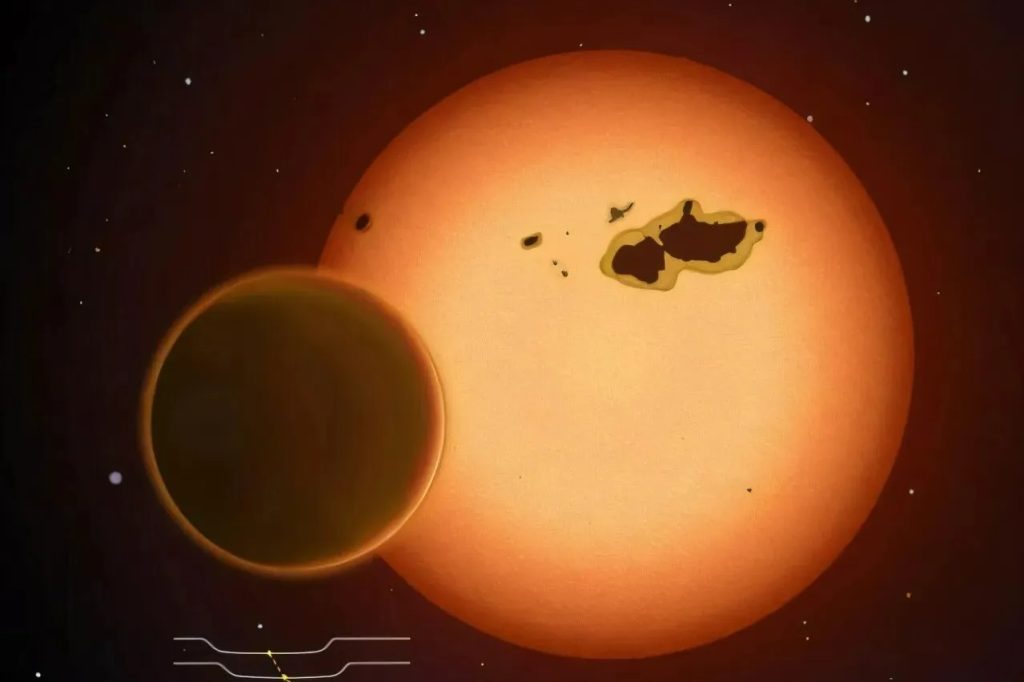-
The Discoveries of the New Super-Earth and the Super-Earth Hypothesis:
Super-Earths are theoretical planets that are defined as Earth-mass planets with radii greater than Earth- radius but less than Mars. Researchers have discovered that a new planet, specifically Super-Earth b, orbits an nearby star every 207.5 days, completing an orbit of its nearby star. Credit: Alamy. This planet, with the same alien-hunting tool, is suspected to host potentially alien life. The findings reaffirm that the search for exoplanets continues to be one of the most promising avenues of human exploration. -
The TTV Technique and its Mathematical Significance:
The discovery of Kepler-725c, a gas giant planet in the habitable zone of its star, highlights the importance of the Transit Timing Variation (TTV) technique. This method is being used to identify smaller planets that would otherwise be difficult to find using other methods like the transit method or the radial velocity (RV) method.The study shows that TTVsignal of Kepler-725b confirmed the presence of its hidden sister planet, Kepler-725c, which is 10 times Earth-like in mass and receives about 1.4 times the solar radiation of Earth. Kepler-725c is in the habitable zone of its sun-like star for more than half the time, making it a potential host of life, particularly if it could sustain liquid water with Earth’s conditions. This study suggests a promising alternative to the Earth 2.0 concept, as it indicates that perhaps other forms of life could exist on distant exoplanets.
-
Super-Earths in the Heliocentric Nucleus:
Super-Earths are considered to reside in the same system as the Sun but orbit at a higher distance, similar to how Earth orbits the Sun. This Super-Earth, Super-Earth b, is a type of hot Jupiter and is currently the first Exoplanet discovered using the TTV technique.Super-Earths have unique characteristics, such as their shorter orbital period (compared to Earth) and their detection using the TTV method, which provides more comprehensive data about the planet’s orbital mechanics. This discovery underscores the complexity of exoplanet detection for long-period planets, which is still a challenge in the field.
-
The Early Discoveries and the peculiarities of the method:
Among the discoveries, Super-Earths are a relatively new category of planets. Currently, exoplanets are sought after through methods like the transit and radial velocity methods, which work exceptionally well for planets within stellar Roche lobes, typically shorter period orbits.However, identifying planets with long orbital periods, such as Super-Earths, is more complex because only some super-Earths have been found yet. To date, only a handful of organized systems exist with multiple identified planets, either through the transit or RV method. The discovery of Super-Earths by TTV technique bridges this gap, offering better detection for future research on long-period, traditional hot Jupiter planets.
-
Applications and the Implications for Humanization and Science:
The Super-Earths found via TTV are of interest because of their mathematical properties and potential for studying extraterrestrial life. These planets can only exist in the habitable zone of their respective stars, where conditions are optimal for human and alien life. The discovery of Super-Earths challenges the current understanding of super-Earth classification and raises questions about planetary origins and the intent behind planet orbits as detected through transit and other methods.Moreover, the techniques employed in the discovery of Super-Earths highlight affirmative findings for alien life and the ongoing efforts to explore beyond our solar system. The successful detection of Super-Earths may open new avenues for research in both planetary science and alien exploration, as they represent unexpected and unprecedented opportunities for discovering planetary bodies.
-
Humanizing the Search for Exoplanets and planets in alien systems:
While the study of Jupiter’s largest moons is endlessly fascinating, the discovery of super-Earths must overcome the ethical and practical challenges of determining planetary origins. For example, determining the intent behind certain transit-based detections raises questions about whether intent exists in nature.The TTV method offers a promising alternative for detecting smaller planets and could pave the way for identifying planets that, while smaller than Earth, may hold hidden potential for life. This discovery serves as a reminder of the potential mathematical and educational value of exoplanet research, even if the search for earth-like planets remains largely theoretical until breakthroughs are made.











